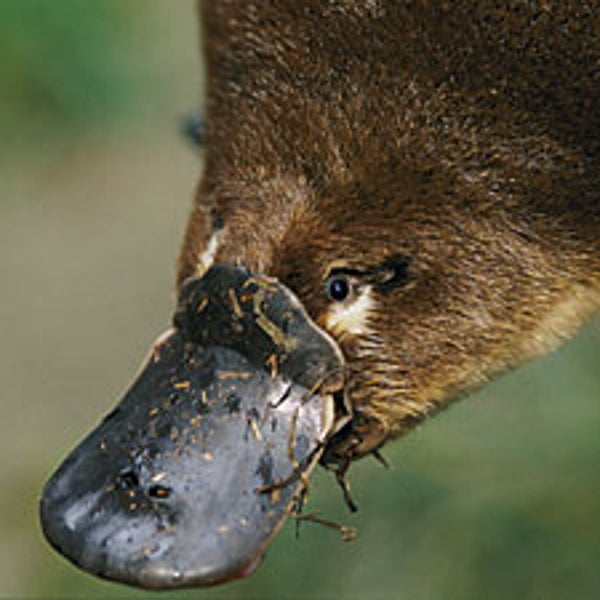Only two kinds of egg-laying mammals are left on the planet today—the duck-billed platypus and the echidna, or spiny anteater. These odd “monotremes” once dominated Australia, until their pouch-bearing cousins, the marsupials, invaded the land down under 71 million to 54 million years ago and swept them away. New research suggests these two kinds of creatures managed to survive because their ancestors took to the water.
Before making their way to Australia, the marsupials had migrated from Asia to the Americas to Antarctica. Forced to contend with all the animals along the way, marsupials may have been primed for competition, hence accounting for their overwhelming success in Australia, says evolutionary biologist Matthew Phillips of the Australian National University in Canberra: “The question then becomes, ‘Why did the monotremes survive?’”
Phillips and his colleagues suggest that platypuses and echidnas made it through the marsupial invasion because their ancestors sought refuge where marsupials could not follow—the water. When marsupials are born, they need to constantly suckle milk for weeks, and as such, newborns could drown if their mothers ever had to swim for long.
The theory seems plausible for platypuses, which are amphibious creatures. Echidnas, however, dwell solely on land. The investigators used genetics to come up with an answer. They found that echidnas diverged from platypuses only 19 million to 48 million years ago, meaning that echidnas recently had semiaquatic ancestors and only later recolonized the land. A number of features of echidnas indicate that they may have once had an amphibious platypuslike forerunner—streamlined bodies, rearward-projecting hind limbs that could serve as rudders, and the contours of a ducklike bill during embryonic development.
A previous study of early monotreme fossils had suggested the platypus and the echidna diverged more than 110 million years ago, far longer than the genetic analysis indicates. But Phillips’s team reanalyzed 439 features of those early fossils and found that echidnas and recently evolved platypuses were better grouped together instead of with more ancient fossils. The reconstructed lineages support the researchers’ genetic findings, which they reported online September 23 in the Proceedings of the National Academy of Sciences USA. “The genes and the bones now appear to be telling the same story, which is encouraging,” says mammalogist Robin Beck of the American Museum of Natural History in New York City, who did not take part in this research.
So far scientists have found no fossil evidence of an echidna transition from water; the fossil record of monotremes remains quite incomplete, Beck says. But a number of fossil sites in Australia are 20 million to 25 million years old, about when the researchers think echidnas evolved. “With luck, future expeditions to these sites will discover fossil echidnas that document a transition from a platypuslike form,” he suggests.
The presence in monotremes of egg laying and other primitive traits from distant ancestors, such as reptilelike shoulders, is often offered as reasons for their apparent inferiority, Phillips says. These new findings help to recast these archaic features in a positive light—for instance, whereas the reptilelike shoulders are poor for running fast, they provide strong bracing, allowing for huge shoulder and arm musculature to help echidnas dig into the dirt and platypuses maneuver in the water. “Most reptiles also possess these ‘primitive’ traits and yet, in terms of species numbers, are more successful than any mammal group,” Phillips adds.
Note: This article was originally printed with the title, "Extreme Monotremes."
